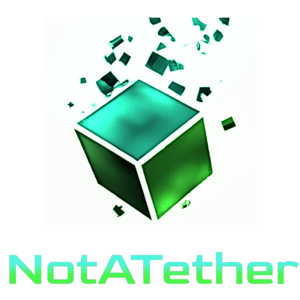Good day. Today we are going to talk about containers. But with a twist.
What is a container?
Containers are a relatively new technology that allows you to package and run applications in a lightweight, portable, and secure way. They have existed for the past 15 or so years, and they are commonly – but not always – used for deploying and managing cloud-native applications such as microservices, and web services. I said not always because some people simply use it to make their programs easier to run on their systems.
A container is like a portable operating system (also called an “OS”) that holds an application so it can run independently of other applications. You can copy the necessary files to another system and it will still run properly. It’s like putting an app in a box that contains all the necessary files, settings, and other data, which you can then transport to different comupters. In fact, this is somewhat similar to what an orchestration tool like Kubernetes would do, only that particular software makes duplicates of each container on all the nodes it runs on, and manages them independently without transporting any containers between the network.
Each container is like a separate virtual machine that runs by itself and doesn’t interfere with other virtual machines. That means its great for separating apps into different containers so that they don’t interfere with each other, for example if they use the same port. However, they are often much smaller than virtual machines because they share the host’s kernel. Additionally, they can run even if you don’t have a hypervisor installed.
Some of the ways people use containers:
- Application deployment
- Microservices
- Continuous integration and deployment
- Hybrid cloud environments
- DevOps
Isolating applications
Earlier, we talked about how apps can be separated from each other using containers. Well, what are the benefits of isolating apps inside containers?
Large applications are typically made up of small, independent components that communicate with each other over the network. Even if it’s a program running on your desktop, oftentimes it has an update feature that connects it with the components on the server that send the new version of the program. Each module of the program can be deployed and scaled independently, and containers provide a way to isolate these modules from each other so that they can run without interfering with each other.
Containers can run a wide range of applications, including web applications, databases, message queues, and more. Another thing that large companies are doing with containers is that they are using them to build, test, and deploy applications across different environments. They are a good alternative to purchasing a large number of big workstations, because employees can use thin clients instead.
How you can run containers
There are many programs that can run containers, such as LXC, Apache Mesos, OpenVZ, and rkt. Most people use a tool called Docker to fetch, run, and manage the lifecycle of containers. Docker provides an online repository with thousands of containers which you can download and run for free, called Docker Hub. You can also create your own container and upload it to Docker Hub.
Docker is not only the most popular container software but it is also a powerful tool that enables developers and IT teams to build, deploy, and manage containers.
Docker makes it easy to scale applications horizontally by running duplcate containers, allowing you to add more containers or decommission some as needed. Many cloud providers have realized this and now offer containers as a service which can be scaled at will. And because you can quickly spin up and tear down containers, it makes it easy to test and deploy changes to applications. This can speed up the development and deployment process, enabling teams to deliver features and updates more quickly.
As far as security goes, containers can isolate applications and their dependencies from the rest of the system, reducing the risk of vulnerabilities. Docker also provides a number of security features, such as image signing and access controls, to help protect your applications and the data inside them. However, that does not mean you can run malware inside a container – always do your due diligence and check whether a container is safe to run or not.
We will show you how to run containers in another video. For now, let’s talk about some challenges facing containers.
First off is data persistence. Containers are usually stateless, which means they do not store data permanently. In other words, data is lost after you shut down the container. This can make it challenging to keep records of data, especially if your application requires long-term storage or data backups. To solve this, it is possible to create a virtual hard disk which you can attach to the container.
Next, there is security. While containers can provide better security than traditional monolithic applications, they also introduce new security challenges. For example, if a container is compromised, it might be able to access other containers running on the same host, or even the host itself, depending on the vulnerability. And securing the container image and runtime requires additional you to take measures. You should always keep your operating systems up to date so that any vulnerabilities that allow a container break-in are patched. You should also close any unused ports on the host and container, and ensure that there is no unnecessary programs running on them.
Then, there is resource overhead. Containers require resources, such as CPU and memory, to run. This can impact the overall performance of the entire system, particularly if you are running too many containers on the same host. The solution is to make sure that your containers are not using more memory and CPU than the capacity of the host system.
Last is the learning curve. Containers are a new technology, so there’s a long way before for developers and IT teams to get used to it. And also, it might be frustrating to learn about it because it is hard to understand. But fortunately, that’s why we are here. We will give you all kinds of tutorials and guides about technologies, including containers, for free.
Recap
- A container is used to run apps separately from each other.
- Containers are a good alternative to virtual machines because they are much smaller in size.
- Containers are used for running modern, cloud-native applications that are designed to be scalable, resilient, and agile.
- There are many different programs for running containers, but most people use Docker.
- There are both advantages and disadvantages to using containers – for example, be careful not to run too many containers at once.
Over all, containers are a relatively new technology that will take time to learn, but will but you in the cutting edge of the industry once you master it, because there is a large demand for containerized applications, and people who can create and maintain them.


